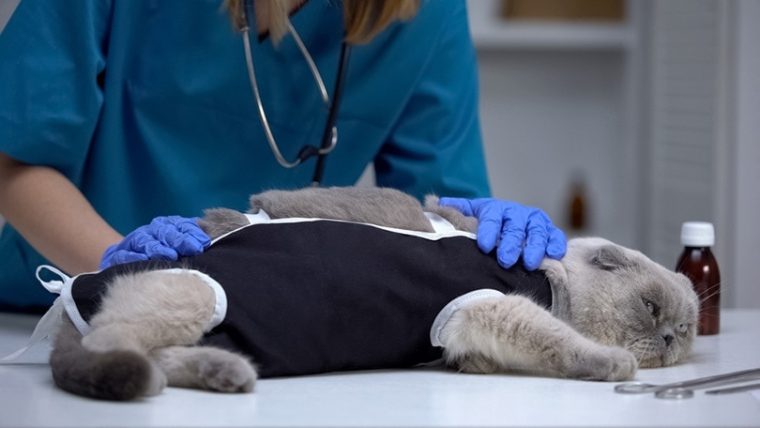
If you have already taken your kitty to the vet, they have likely discussed getting your animal fixed. Spaying and neutering involve surgery to prevent reproduction. So, to prevent surprise and multiple litters of babies from your cat you should get her spayed. To prevent your male cat from roaming around and mating indiscriminately you should get him neutered.
Spaying is the surgery to remove the ovaries and the uterus of a female cat, also called an ovariohysterectomy. Neutering is for male cats and is the removal of the testicles, also called castration.
You might wonder why this surgery seems so pushed by animal care providers. But we have to agree—the pros certainly outweigh the cons. We want to explain all the benefits of spaying or neutering your animal and discuss the potential risks to keep you completely informed.

The 10 Greatest Benefits of Spaying and Neutering Your Cat
1. It Helps Your Cat Live a Better Life

If you map out the pros and cons, spaying or neutering has more benefits. And it significantly improves both male and female quality of life by eliminating health risks and behavioral issues associated with being intact.
2. It Decreases Spraying Risks

Cats reach sexual maturity around six months of age, sometimes earlier. When they do, it is very common for both males and females to start spraying to mark their territory and attract a mate.
It doesn’t matter how many enzymes, chemical cleaners, and homemade compounds you use in your home. Once your cat starts spraying, getting them to stop can be very difficult.
If you wait until your cat has sprayed, there is no guarantee that getting them spayed and neutered at that time will stop the behavior either. So, it’s best to tackle it before it ever becomes a problem.
3. It Decreases the Likelihood of Running Away

When your kitty starts getting those urges, it might be more likely that they’ll try to bolt out the door. This is especially true if they smell a male or female outside that they want to interact with. When you get your cat fixed, it takes away those naturally occurring urges to find a mate.
We need to point out—some cats just like being outside, and they will try no matter what. But sexually-dominated attempts to get out are fueled by hormones. So, if your cat’s hormonal urges are reduced by spaying and neutering, the roaming should settle.
4. It Can Even Out Temperament

When cats are sexually mature, it can cause aggression and undesirable behavior in some. That is because it elevates certain hormones and chemicals in the brain. Your cat might become intolerant of other cats in the home.
In addition to attitude, there’s the female in heat. If you’ve ever experienced a cat in heat, you won’t forget it. Their entire personality can change, they often become much more affectionate, and even overbearingly so. While female cats don’t bleed, they do display other apparent signs of heat. Such as yowling, seeking affection, putting their bottom in the air and tail to the side.
Males can get more aggressive with other unaltered males. They may compete over territory and females. This might cause aggression if you have multiple unaltered male cats in your home.
If you have ever witnessed a catfight, it isn’t pretty. Things can get downright nasty. To prevent violence towards each other—or even to you, it’s best to opt for the surgery.
5. It Cuts Back on the Stray Population

If there are fewer cats out there breeding, it lowers the stray population. We can also do our part to prevent it. There are an estimated 3-40 million stray or feral cats in the USA. If you go into the city or town nearest you, you will likely see several feral cats running around the streets. These cats go without human care and, most of the time, without consistent meals and health care.
Also, homeless cats can severely impact the bird and wildlife population. Getting your cats sterilized to reduce the number of kittens needing homes will help reduce the number of cats ending up in shelters or unowned.
6. It Reduces the Risk of Contracting a Disease
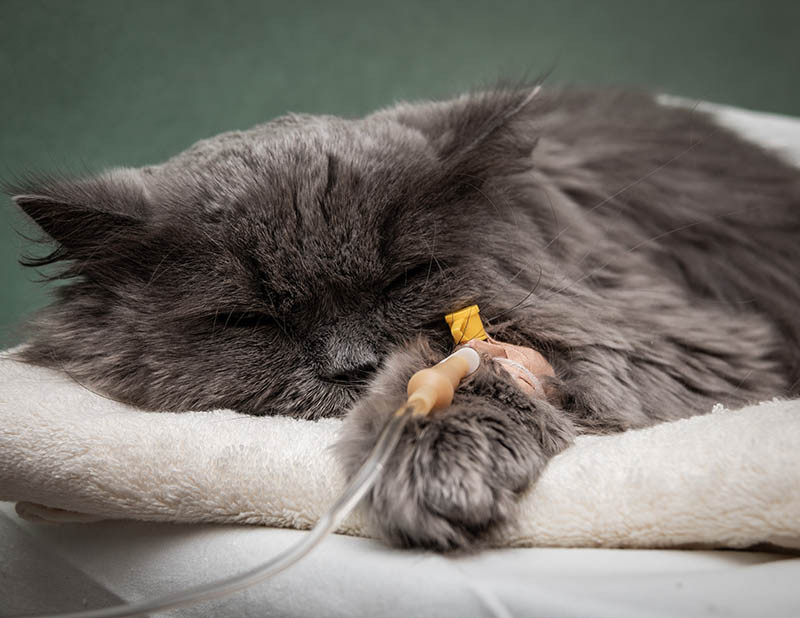
If your cat is not sexually active, it reduces the risk of potentially serious infectious diseases that can lead to lifelong illness. It also reduces the risk of infections and injuries from street fighting with other cats.
Illnesses that require close contact such as Feline Immunodeficiency Virus and Feline Leukaemia Virus are more often contracted by cats that are fighting.
All in all, it’s just not worth the risks.
7. It Reduces the Risk of Euthanasia, Pound Visits, and Shelter Stays

Unfortunately, homelessness is a really huge issue in the domestic cat world. The more that cats reproduce, the higher the risk of euthanasia, pound visits, and shelter status.
Certain services allow you to capture, spay or neuter, and release feral cats to prevent overpopulation. Typically, a vet will mark the cat with a clipped ear or some other visual cue to show the cat has been surgically sterilized.
8. It Reduces the Risk of Male Reproductive Issues
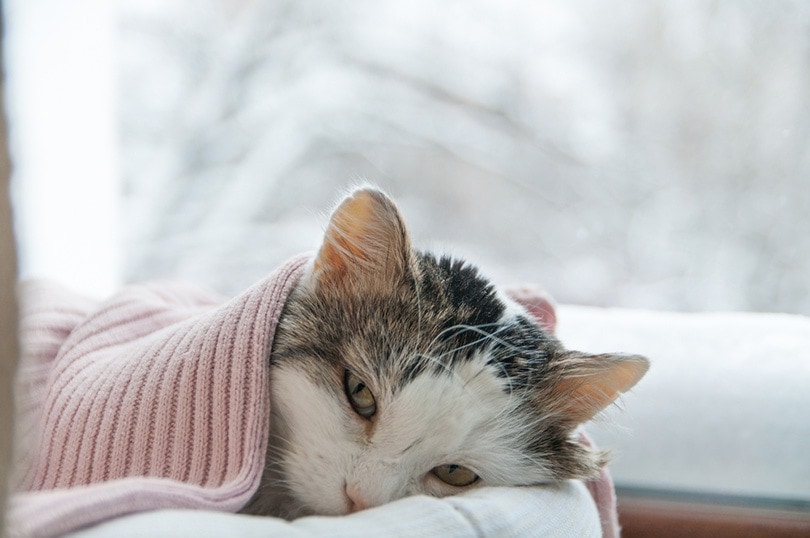
A male staying unaltered can seriously impact health in the future. To reduce the risk of health issues such as testicular cancer, prostate disease, and hernias, it’s always best to get your male neutered.
9. It Reduces the Risk of Female Reproductive Issues
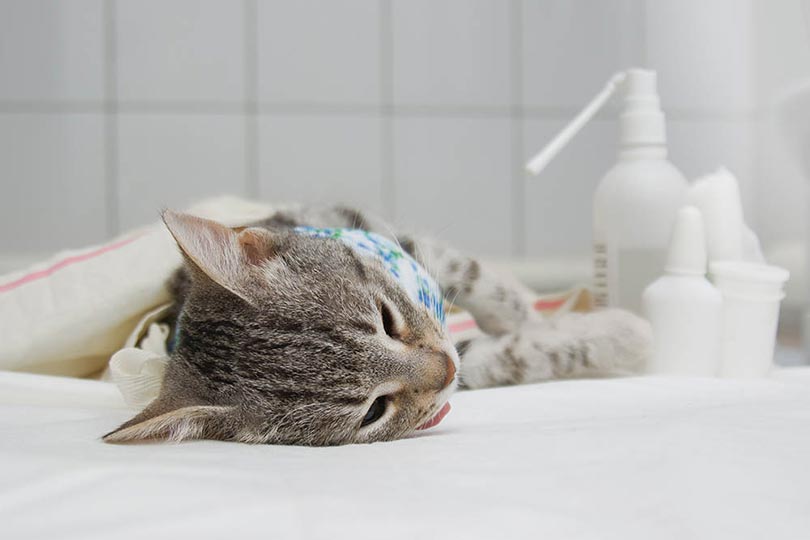
Females can run into several reproductive issues along the way. If you fix your female, it lessens her chance of contracting any of these reproductive-related problems.
Female cats are very at risk of uterine and mammary cancer. Your female also might experience some other complications such as uterine infections, ruptures, and torsion. They might also develop cysts or metritis. As the spay surgery removes the ovaries and uterus there can no longer be diseases of these organs.
10. It Helps You Do Your Part in the Community

The bottom line is that it’s just responsible for getting your cat spayed or neutered. It might not seem like a big deal, but it’s an upside in almost every category. If everybody did their part, it would reduce the number of homeless cats and cut back on the feral population.

Spaying & Neutering Facts
So now you see just how beneficial it is to get your cat spayed or neutered. In rare events, this won’t be possible or might not be advisable – per the recommendation of your veterinary surgeon. But here are some tips on where you can receive spay and neuter surgery and how you can save money doing so.
Where to Get Your Cat Spayed or Neutered
You have a lot of variety regarding where to get your cat spayed and neutered. Luckily, there are options to fit just about every different budget.
Vet’s Office
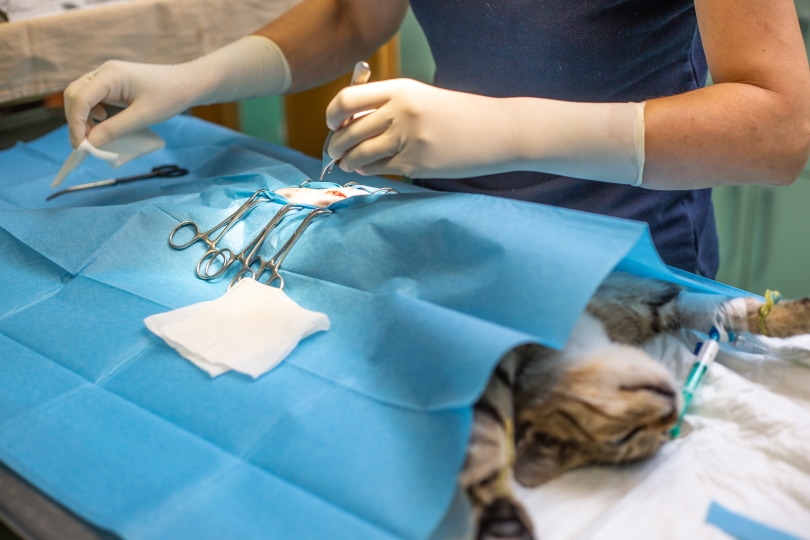
You can get your cat fixed at your veterinarian’s office. They offer spay and neuter surgeries to patients, but it can be a little pricier than some other options. Many vets’ offices are full-service clinics and charge accordingly for their services. The highly trained professionals, surgical and monitoring equipment are all part of the costs involved.
However, most people prefer taking their cat to their vet for this surgery because they have a relationship with that veterinary surgery and trust in their care.
Shelters/Rescues
Shelters and rescues often offer spay and neuter services to the general public. This generally operates on a timeline, so you’ll have to schedule your appointment in advance and potentially wait until your name pops up on the list.
Mobile Clinics
Mobile clinics are typically low-cost options that go from shelter to shelter, offering spay and neuter service. You must sign up with a mobile clinic in advance, so always be sure you know when one is coming to your area. For more information about this, you can ask your local animal shelter.
How Much to Get Your Cat Spayed or Neutered
Vet care as a whole can be a large expense for pet owners. It can impact your monthly budget, especially if it is an unexpected large amount. Spaying and neutering can feel pricey but will be more cost effective than paying for complications or illnesses because you didn’t sterilize your pet. Such as tumor removals or cesarean section surgery.
It typically costs less to get your cat neutered than spayed. So, if you have a male, you’re likely to spend less than a female. The female process is a lot more complicated and is an internal surgery. The male process is external and relatively faster.
The general cost for spay and neutering also depends on the type of facility you choose. If you select a high-end veterinary office, you’ll pay more than a mobile clinic as they have higher overheads. It simply depends on your preference. Spaying and neutering can cost anywhere between $40 and $500.
What Age to Get Your Cat Spayed or Neutered

It’s typically best to get your cat spayed or neutered between eight weeks and five months of age. This targets the timeline before your cat reaches sexual maturity. The longer you wait, the more likely other issues can develop, and it’s not worth the wait.
Potential Risks of Spaying and Neutering
We have to break it to you honestly. All surgery has its risks and complications. Fortunately, the vast majority of surgeries will go well and recovery will be uneventful. You can help reduce complications by following pre-anesthetic instructions and post-operative care instructions to help keep your cat healthy and happy. The most common complications are post-op due to cats being able to lick at their wounds or stitches.
Some cats and dogs cannot be spayed or neutered due to health complications such as congenital heart problems. Speak with your veterinarian directly about any potential reason your cat should not receive this type of surgery.

Conclusion
So, you will probably agree that the benefits of spaying or neutering definitely outweigh the downfalls. But if you have any concerns over the safety or general questions about the procedure, feel free to ask your veterinarian about anything you might want to know.
They can ease your mind and go over the procedure and expectations with you, explaining everything bit by bit.
You might also like:
- How Long Will a Cat Take to Recover From Spaying?
- Eating & Drinking for Cats Prior to Spaying & Neutering: Our Vet Explains
Featured Image Credit: Motortion Films, Shutterstock







